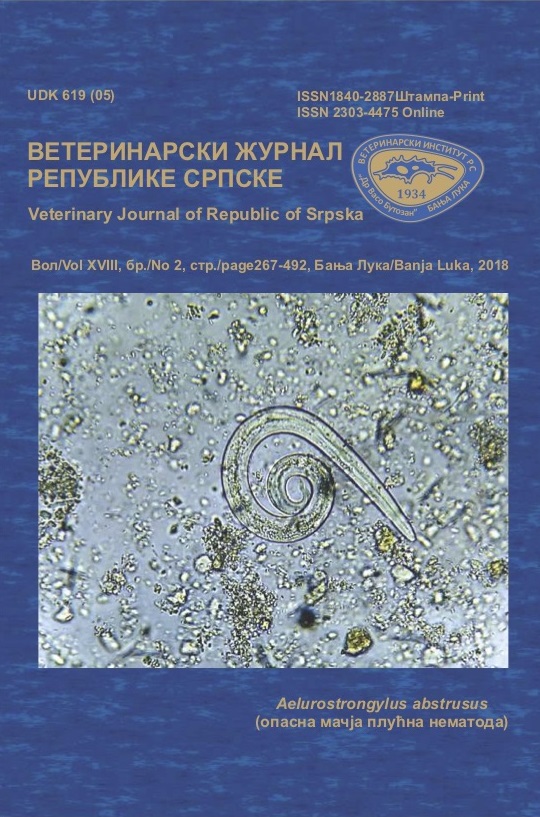IMPORTANT HISTOLOGICAL AND IMMUNOCHEMICAL PARAMETERS FOR CLASSIFICATION OF CANINE MAST CELL TUMORS
DOI:
https://doi.org/10.7251/VETJEN1802370VAbstract
Mast cell tumors (MCTs) are one of the most common neoplasms indogs. They originate from the bone marrow. Several criteria have been proposed
for their classification, including histological grading and cell proliferation markers.
The mitotic index, multiple nuclei, cells with bizarre nuclei and karyomegaly are the
most important parameters for the classification of MCTs on high and low-grade
malignancy. For the confirmation of MCT malignancy grade it is also important to
determine the expression of the transmembrane kinase (KIT) receptor that has a
significant role in the growth and differentiation of mast cell tumors. In high-grade
malignancy MCTs in addition to membrane expression of the KIT receptor, aberrant
cytoplasmic expression can be also observed. Fifty-two MCTs and 12 control
samples of skin from dogs without MCTs were examined. Routinely processed tissue
samples were stained with hematoxylin-eosin. Expression of KIT receptor was
tested immunohistochemically. The classification of MCTs on high and low-grade
malignancy was performed according to the Kiupel’s 2-tier classification and the
expression of KIT receptors. Sixteen of 52 MCTs were of a low-grade malignancy,
while thirty-six were classified as a high-grade malignancy of which 19 MCTs
showed aberrant cytoplasm labelling of KIT receptor. All 16 low-grade malignancy
MCTs had only membrane expression of KIT receptor. Most high-grade malignancy
MCTs showed cytoplasmic KIT expression indicating the link between aberrant
KIT expression and increased cell proliferation. The presence of mitotic figures,
multinucleated cells, bizarre nuclei and karyomegaly, as well as KIT receptor
expression pattern are the most important prognostic factors in dogs with mast cell
tumor.
Downloads
Published
2019-01-15
Issue
Section
Енглески

